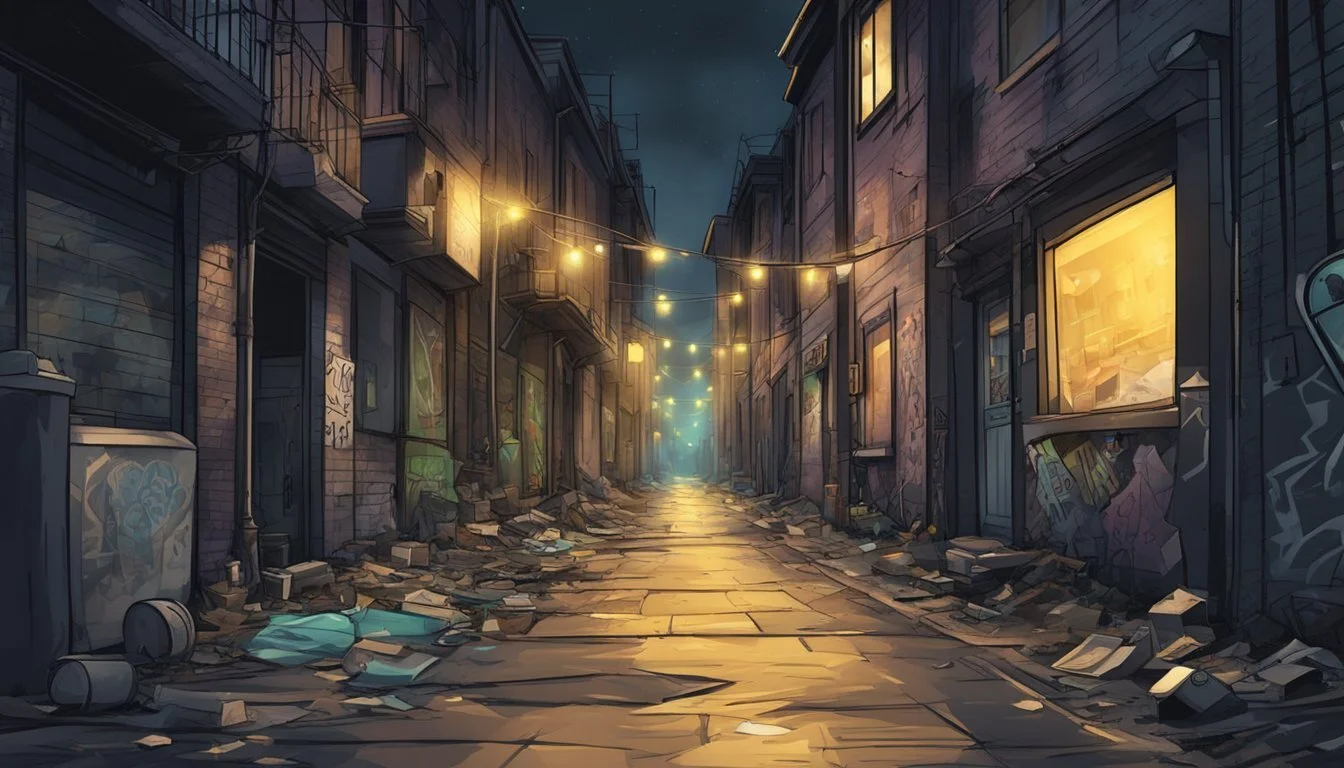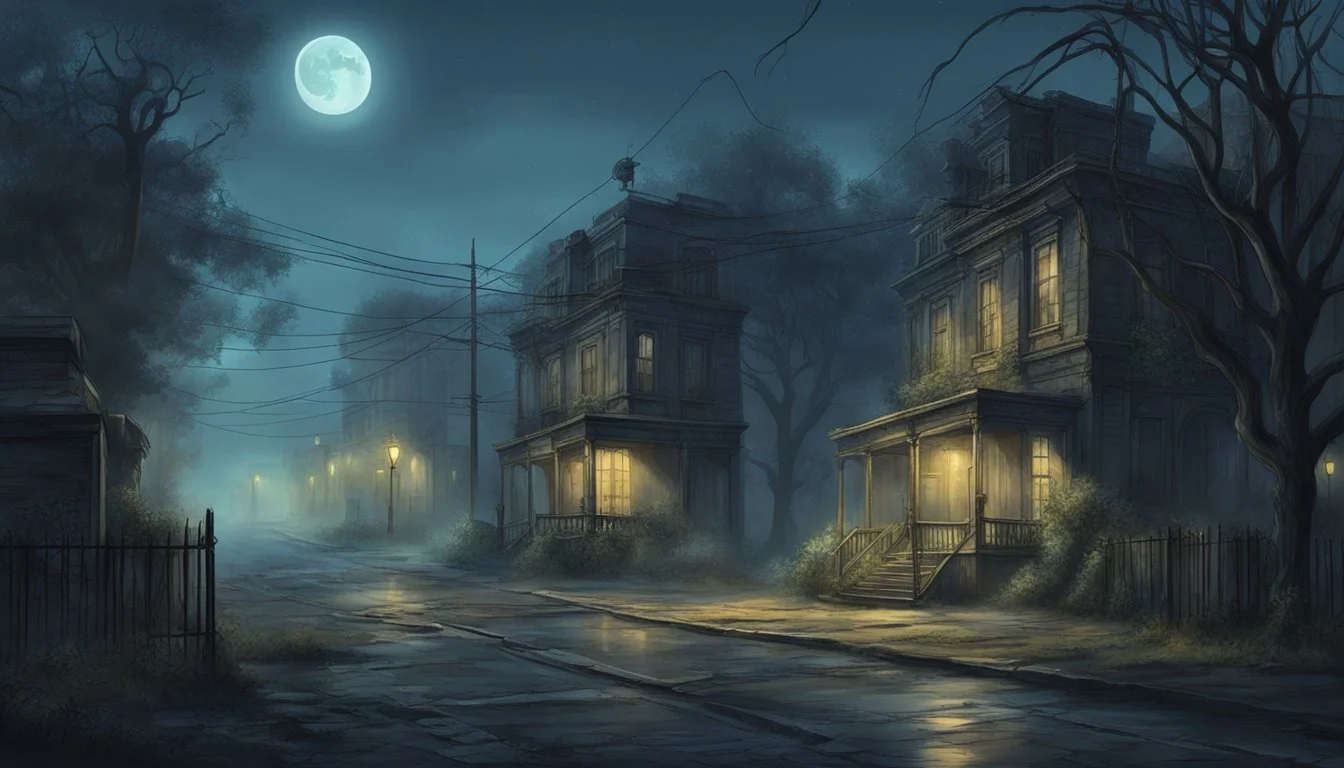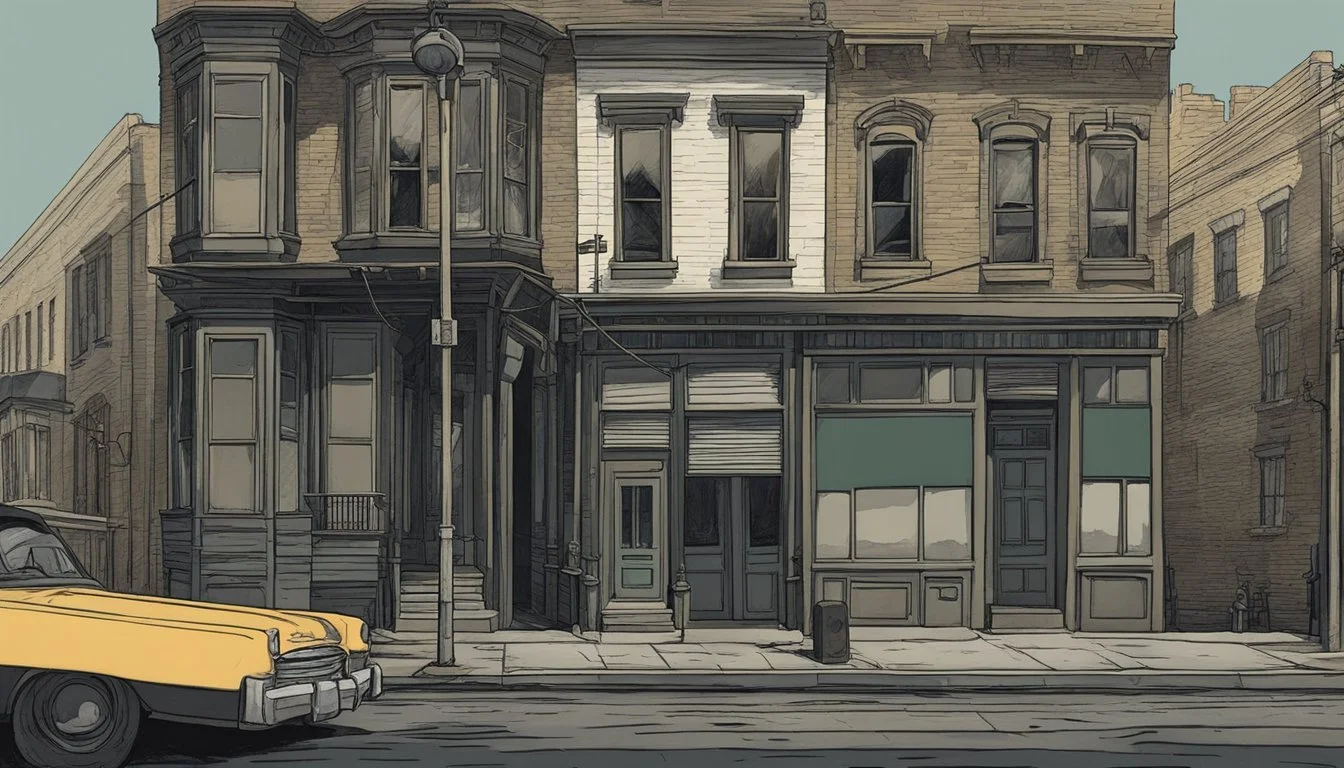Calvin Jackson: 6 East Side Locations That Became Hunting Grounds for a Killer
Mapping the Predator's Territory
Calvin Jackson terrorized Manhattan's West Side in the early 1970s, leaving a trail of victims in his wake. The serial killer and rapist targeted vulnerable women, transforming seemingly safe locations into deadly traps.
Jackson's crimes exposed the dark underbelly of New York City, revealing how easily a predator could exploit urban anonymity and prey on the marginalized. His case serves as a stark reminder of the importance of community vigilance and support for those most at risk in society.
1) The Abandoned Warehouse on Elm Street
The abandoned warehouse on Elm Street became a notorious location in Calvin Jackson's series of crimes. This dilapidated structure, once a bustling industrial site, stood as a silent witness to unspeakable acts.
Jackson targeted this area due to its isolation and lack of foot traffic. The warehouse's broken windows and crumbling facade provided ample hiding spots for the killer to observe potential victims.
Inside, the vast empty spaces and maze-like corridors created an ideal environment for Jackson to evade detection. The absence of functioning utilities meant the building remained shrouded in darkness, further concealing his activities.
Local authorities later discovered evidence suggesting multiple victims were brought to this location. Forensic teams combed through the debris, uncovering crucial clues that would eventually lead to Jackson's capture.
The warehouse has since been demolished, but its dark history remains etched in the collective memory of the neighborhood. Today, a small memorial stands on the site, serving as a somber reminder of the lives lost.
2) Quiet Hollow Park
Quiet Hollow Park became another hunting ground for Calvin Jackson in his string of murders. Located on Manhattan's East Side, this small urban park provided secluded areas that attracted both innocent visitors and those with sinister intentions.
Jackson targeted women who frequented the park alone, often in the early evening hours. He would observe potential victims from hidden vantage points before approaching them.
The park's winding paths and dense vegetation offered concealment for Jackson's attacks. Several of his victims were last seen entering Quiet Hollow Park before their disappearances.
Law enforcement eventually increased patrols in the area after connecting multiple incidents to this location. However, Jackson had already claimed several lives by that point.
The murders at Quiet Hollow Park highlighted the vulnerability of public spaces and the importance of personal safety awareness. It also led to discussions about improving lighting and security measures in urban parks.
3) Old Mill Road
Old Mill Road in New York's East Side became one of Calvin Jackson's infamous hunting grounds. This quiet street, with its historical connections to the area's industrial past, provided an unsettling backdrop for his crimes.
The road takes its name from an old mill that once stood nearby, established around 1770 on Bull Creek. Originally located at the second floodgate about half a mile south, the mill was relocated to its present site in 1810.
Despite its seemingly peaceful nature, Old Mill Road harbored dark secrets during Jackson's reign of terror. The area's mix of residential and industrial spaces created opportunities for the killer to prey on unsuspecting victims.
Jackson's crimes on Old Mill Road highlighted the vulnerability of urban spaces, even those with long-standing community ties. The contrast between the street's historical significance and its role in these brutal events serves as a chilling reminder of the area's complex past.
4) Jackson's Diner on 5th Avenue
Jackson's Diner on 5th Avenue was a popular eatery in the East Side neighborhood. The establishment became one of Calvin Jackson's hunting grounds during his killing spree.
The diner's bustling atmosphere and constant flow of patrons made it an ideal location for Jackson to observe potential victims. He would often sit at the counter, blending in with other customers while surveying the scene.
Jackson's visits to the diner were frequent enough to establish a routine, yet sporadic enough to avoid arousing suspicion. He carefully selected his targets, focusing on individuals who appeared vulnerable or isolated.
The diner's proximity to other businesses and residential areas provided Jackson with easy access to escape routes. This strategic location allowed him to quickly disappear into the surrounding streets after committing his crimes.
Law enforcement eventually identified Jackson's Diner as a key location in their investigation. Surveillance footage and witness statements from the diner played a crucial role in piecing together the killer's movements and patterns.
5) The Bridge Underpass at Greenway
The Bridge Underpass at Greenway became a chilling location in Calvin Jackson's series of crimes. This secluded spot along the East River provided an ideal setting for Jackson's nefarious activities.
The underpass, located near the newly developed East Midtown Waterfront project, offered isolation and cover. Its proximity to the Manhattan Waterfront Greenway made it accessible yet discreet.
Jackson exploited the area's limited foot traffic and poor lighting conditions. The underpass's concrete structure and echoing acoustics masked sounds, further enabling his crimes.
Law enforcement later identified this location as a key piece in the puzzle of Jackson's activities. Evidence recovered from the scene proved crucial in building the case against him.
The Bridge Underpass at Greenway serves as a stark reminder of how urban spaces can become dangerous when exploited by criminals. It highlights the importance of proper lighting and security measures in public areas.
6) Rosewood Cemetery
Rosewood Cemetery, while not directly connected to Calvin Jackson's crimes, holds historical significance. This burial ground is located in Rosewood, Florida, a town with a tragic past.
In 2019, a ground-penetrating radar survey identified over 40 previously unknown graves at the site. This discovery shed new light on the area's history and the lives of those interred there.
The cemetery contains visible depressions in the ground, indicating the presence of graves. These physical markers, combined with the radar survey results, provide valuable information about the cemetery's layout and occupancy.
Visitors can explore a virtual 3D representation of Rosewood Cemetery online. This digital recreation offers a unique way to experience and learn about the site without physical travel.
The preservation and study of Rosewood Cemetery contribute to ongoing efforts to understand and commemorate the community's past. It serves as a tangible link to the area's history and the people who lived there.
Historical Context of East Side Locations
The East Side of Los Angeles underwent significant urban transformations and social changes in the decades leading up to Calvin Jackson's crimes. These shifts shaped the environment where his attacks took place and influenced the area's vulnerability to criminal activity.
Urban Development and Sociopolitical Landscape
The East Side experienced rapid industrialization in the early 20th century, attracting diverse immigrant populations. Factories and warehouses sprouted alongside working-class neighborhoods. By the 1960s, many middle-class residents had moved to suburbs, leaving poorer communities behind.
Economic decline hit the area hard in the 1970s and 1980s. Unemployment rose sharply. Many buildings fell into disrepair. Gang activity increased, and drug use became more prevalent on the streets.
City policies often neglected East Side neighborhoods. Infrastructure improvements lagged behind other parts of Los Angeles. Police presence was limited in some areas, creating pockets with minimal surveillance.
Previous Criminal Activity in the Area
The East Side saw a rise in violent crime rates starting in the late 1960s. Gang-related incidents became more frequent, particularly in certain housing projects and low-income areas.
Several high-profile cases drew attention to the area's crime issues:
The Night Stalker attacks in 1984-1985
Multiple gang-related shootings in the mid-1980s
A series of unsolved murders of sex workers from 1983-1988
Law enforcement faced challenges in addressing these crimes due to:
Limited resources
Strained community relations
Witnesses often reluctant to come forward
These factors created an environment where serial predators like Calvin Jackson could operate with less risk of detection for extended periods.
Profile of Calvin Jackson
Calvin Jackson was a serial killer who terrorized Manhattan's West Side in the 1970s. His crimes shocked the city and left a trail of devastation in their wake.
Background and Early Life
Calvin Jackson was born on March 5, 1948, in Buffalo, New York. Little is known about his childhood, but reports suggest he experienced a troubled upbringing.
Jackson moved to New York City as a young adult. He found work as a janitor at the Park Plaza Hotel, a rundown establishment primarily housing elderly widows.
This job would later become instrumental in his crimes. It provided Jackson with access to vulnerable victims and intimate knowledge of the building's layout.
Psychological Analysis
Experts have attempted to understand Jackson's motivations and mental state. His crimes displayed a pattern of targeting older women, suggesting deep-seated issues with maternal figures.
Jackson's method of killing evolved over time. He began with strangulation but later incorporated stabbing. This escalation in violence is often seen in serial killers as they become more confident and seek greater thrills.
His ability to appear normal and hold down a job while committing heinous acts points to antisocial personality disorder. Jackson likely lacked empathy and remorse, enabling him to carry out his crimes without apparent psychological distress.
Investigation and Law Enforcement Response
The hunt for Calvin Jackson, known as the East Side Slayer, challenged law enforcement and reshaped policing strategies in Manhattan. Detectives faced a complex case that required innovative approaches to track down the elusive killer.
Initial Reports and Case Development
The first reports of Jackson's crimes came in early 1970. Victims were found in abandoned buildings and alleyways on the East Side. Police initially struggled to connect the murders due to the varied victim profiles.
As bodies piled up, detectives noticed similarities in the crime scenes. A task force formed to analyze evidence and interview witnesses. Forensic teams meticulously combed each location for DNA, fibers, and other trace evidence.
Surveillance footage from nearby businesses proved crucial. It showed a shadowy figure lurking near crime scenes. This led to the creation of a suspect profile and composite sketch.
Impact on Community Policing Strategies
Jackson's reign of terror prompted changes in policing methods. Officers increased patrols in high-risk areas identified through crime mapping. Community outreach programs expanded to gather tips and build trust.
The NYPD implemented a new hotline for anonymous reporting. This led to valuable leads from residents who previously feared coming forward. Detectives also embraced emerging technologies like computerized fingerprint matching.
Foot patrols in vulnerable neighborhoods doubled. Officers received additional training on spotting suspicious behavior and de-escalating potentially violent situations. These tactics aimed to prevent future attacks and catch Jackson in the act.
The case highlighted the importance of inter-agency cooperation. Local precincts shared information more readily and coordinated efforts with state and federal law enforcement partners.










